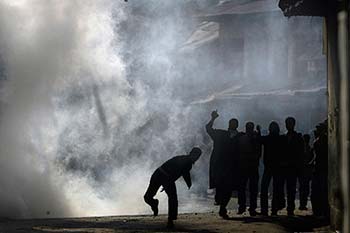Zubair Lone
In his seminal work, Politics, Aristotle mentions, “What is common to the greatest number gets the least amount of care.” This is one of the earliest references to what is known as the ‘tragedy of the commons’ in the modern day social sciences.
The tragedy of the commons refers to a phenomenon in which every individual tries to reap the greatest benefit from a given resource. As the demand for the resource overwhelms the supply, every individual who consumes an additional unit directly harms others who can no longer enjoy the benefits.
 The phenomenon was first described in a pamphlet by economist William Foster Lloyd in 1833 in a discussion of overgrazing of cattle on village common areas. More than 100 years later, ecologist Dr Garett Hardin revived the concept in his 1968 paper in Science to describe what happens when many individuals share a limited resource like grazing lands, fishing areas, living space, and even clean air. Hardin argued that these situations pitch short-term self-interest against common good. And they end badly for everyone resulting in overgrazing, overfishing, overpopulation, pollution and other social and environmental problems.
The phenomenon was first described in a pamphlet by economist William Foster Lloyd in 1833 in a discussion of overgrazing of cattle on village common areas. More than 100 years later, ecologist Dr Garett Hardin revived the concept in his 1968 paper in Science to describe what happens when many individuals share a limited resource like grazing lands, fishing areas, living space, and even clean air. Hardin argued that these situations pitch short-term self-interest against common good. And they end badly for everyone resulting in overgrazing, overfishing, overpopulation, pollution and other social and environmental problems.
A few examples
The key feature of a tragedy of the commons is that it provides an opportunity for an individual to benefit himself or herself while spreading out any negative effects across the larger population.
Imagine farmers letting their cows graze on a village common grazing area. And each one of them, for instance, is allowed six grazing cows. If now, one of them brings an extra animal or two to graze there and does not help in maintaining the grassland, he free-loads or cheats. If this goes on uncontrolled, soon the grazing land will be worthless – denuded of grass, compacted by hooves and prey to erosion. In the long run, all the cows will have a harder time surviving.
Another example, consider a village fish pond where each individual fisherman is motivated to take as many fish as he can for himself. Anxious to avoid losing out to his neighbours, a fisherman will conclude that it is in his best interest to take an extra fish, or two, or three. Unfortunately, this is the same conclusion reached by the other fishermen. Ultimately, a decline in the fish population due to such over-exploitation is shared by the entire village. This is the tragedy of the commons.
As can be seen, both of these examples highlight that optimizing for the self in the short term is not optimal for anyone in the long
The much complex and myriad real life implications
Overgrazing and overfishing are definitely simplified examples of the tragedy of the commons. It plays out in more complex systems of real life with much far-reaching impacts. The overuse of antibiotics has lead to short-term gains in livestock production and in treating common illnesses but it has also resulted in the evolution of antibiotic-resistant bacteria which threaten the entire population. A coal-fired power plant produces cheap electricity for its customers and profits for its owners. These local benefits are helpful in the short term but pollution from mining and burning coal is spread across the entire atmosphere and sticks around for thousands of years. There are other examples too— horrible public conveniences, littering, water shortages, deforestation, traffic jams, even the purchase of bottled water.
How to avert the tragedy?
Dr Garrett Hardin, who popularized this phrase, suggested that it may be done by regulation or by privatizing the “public good.” For instance, in case of overgrazing, one way to avert the tragedy would be for the community to impose a cap-and-trade system on grazing. Here is how it could work. The community studies the problem and figures out what the carrying capacity of the field is in terms of number of cows. Then they allocate grazing share equally to everyone in the community. Community members can buy and sell these shares so that if someone does not want to deal with cows, they can still benefit from the common resource by selling their shares to someone who is willing to graze more cows. The shares would be re-allocated each year, in case the carrying capacity changed.
Another approach, the community might sell the land to individuals and then let each individual farmer manage their own plot of land, in which case they would have an economic incentive to manage their land in the best way possible, avoiding the over-grazing problem. Moreover, the community might also place some restrictions on what the owners could do with the land, like preventing them from undertaking construction or diversion of farmland.
In the final analysis, the key takeaway is that when we have a commonly held resource with open access, everyone has to act together in a coordinated, regulated way in order to avoid depleting or damaging the resource and ensuring that the resource optimally serves the best interests of everyone — both in the short and the long-run.















